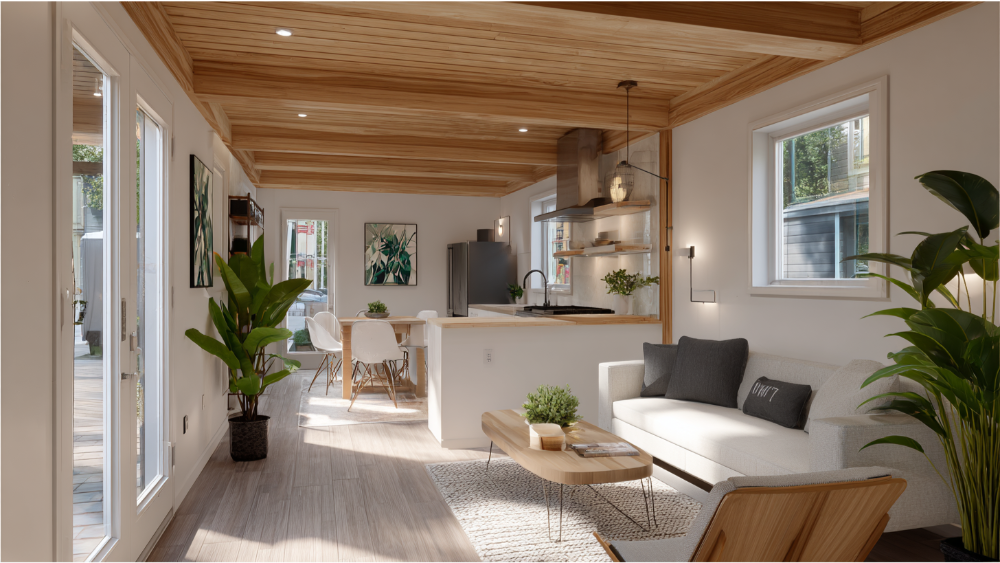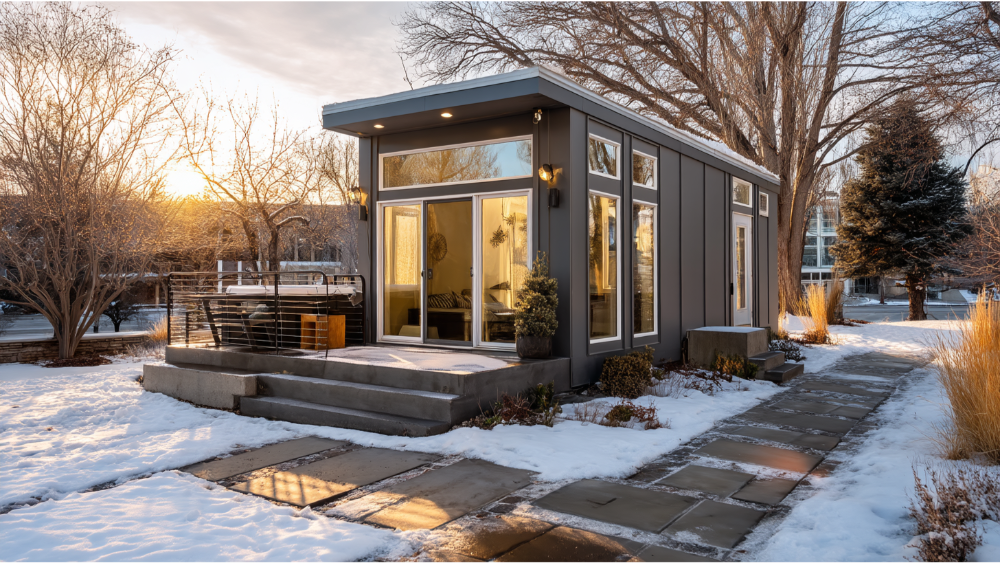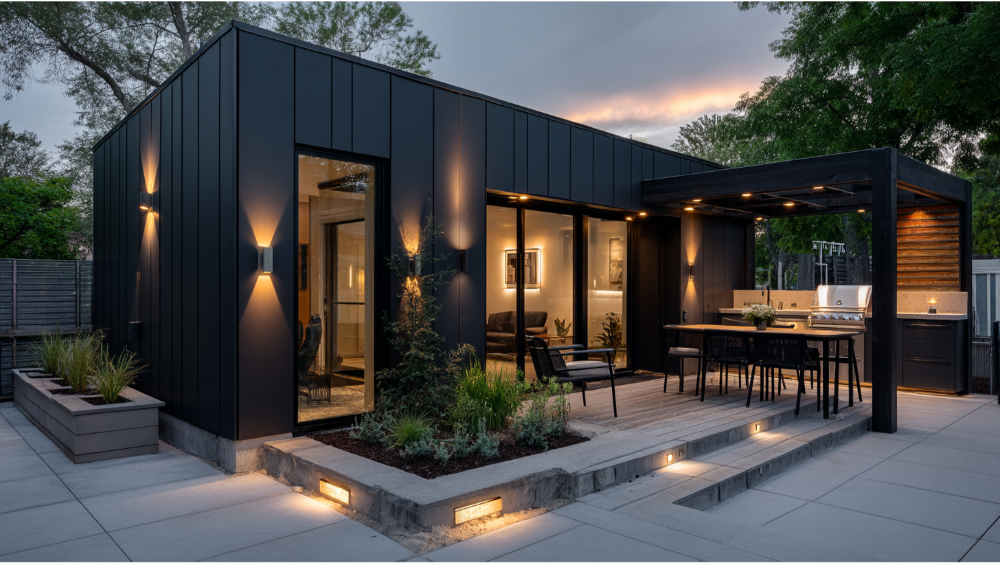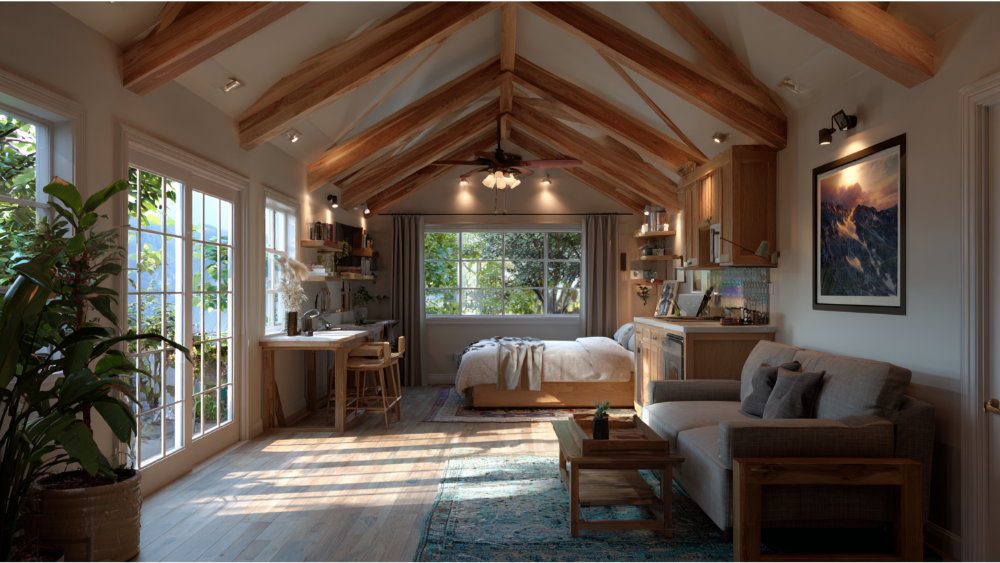In Partnership With
Contact Golden State ADUs
Drop us a line! We look forward to discussing your next project with you!
Cut the chase! Schedule a face-to-face virtual meeting with us today to dive into your project's next steps.
For our returning clients, experience our streamlined, contact-free project proposal process. Simply fill out our short project questionnaire, and we'll deliver your project proposal within 72 hours.
Contact Us:
Follow Us:
How to Finance an ADU in California: 2025 ADU Loans and Affordable Housing Options for Sacramento Homeowners

- Golden State ADUs
- Comment 0
How to Finance an ADU in California: 2025 ADU Loans and Affordable Housing Options for Sacramento Homeowners
Adding an accessory dwelling unit (ADU) to your Sacramento property is one of the smartest ways to create additional living space, generate rental income, or support multigenerational living. Whether you’re planning a backyard cottage, a tiny house, or an in law suite, financing is often the biggest hurdle. The good news? In 2025, California homeowners have more loan options than ever to make building an ADU affordable. From ADU loans and home equity loans to grants, refinance programs, and construction loans based on future property value, there’s a solution for nearly every borrower. In this complete guide, we’ll explain the most current ADU financing options, how to qualify, and what Sacramento homeowners need to know about maximizing equity, lowering loan rates, and navigating the process from design to move-in.
Why ADU Financing Is Different Than Other Home Improvements

Financing an accessory dwelling unit ADU is not the same as updating a kitchen or replacing a roof. ADUs are legal living structures and come with requirements that vary based on local laws. Most projects include everything from site work and foundation to separate utility connections, permits, and final inspections. That’s why ADU loans must account for the full cost of construction, not just materials and labor.
The typical cost of building an ADU in Sacramento ranges from $150,000 to $400,000, depending on size, complexity, and whether you’re converting existing space or constructing a new detached unit. While that’s a significant investment, the long-term benefits include increased property value, potential rental income, and added flexibility for family members like aging parents or adult children.
Top ADU Loan Options Available in 2025
Whether you’re using equity, refinancing your mortgage, or seeking a construction loan, the right loan option depends on your goals, income, credit, and project timeline.
CalHFA ADU Grant Program
For homeowners seeking an affordable housing option to support their ADU goals, the CalHFA ADU Grant Program is an excellent starting point. It provides up to $40,000 in funds to cover pre-development costs such as design, permitting, soil tests, and utility upgrades. These upfront costs can quickly add up and are often excluded from traditional mortgage loans or construction loan products.
To qualify, borrowers must:
- Live in the property as their primary residence
- Meet CalHFA income limits
- Work with an approved lender or loan officer
These grants are not loans and do not require repayment. For homeowners with enough equity to cover construction but not soft costs, the CalHFA grant is a perfect supplement.
Home Equity Loans and HELOCs
Home equity loans and home equity lines (HELOCs) are two of the most common ADU financing tools. These options are best for homeowners with a significant amount of equity and a solid credit history.
- Home Equity Loan: A fixed-rate loan that allows you to borrow a lump sum based on the equity in your home. Repayment terms are predictable and typically range from 10 to 30 years.
- Home Equity Line (HELOC): A revolving line of credit with a variable interest rate. You draw money as needed and only pay interest on what you use.
In 2025, many Sacramento homeowners have seen property values rise, giving them the equity needed to borrow for ADU construction without impacting their current mortgage. However, both options put your home at risk if you default.
Cash Out Refinance

A cash out refinance replaces your existing mortgage with a new one at a higher loan amount, allowing you to take the difference in cash. This cash can be used to finance your ADU construction or renovation project.
Benefits include:
- Potentially lower loan rates than personal or construction loans
- Long repayment terms that reduce monthly payments
- One consolidated mortgage instead of multiple debts
Drawbacks include restarting your mortgage clock and possibly losing a low interest rate on your current mortgage. Still, for borrowers with strong credit and enough equity, this is one of the most flexible loan options.
Construction Loans and Future Value Financing
For homeowners who don’t yet have enough equity, a construction loan or renovation loan based on the future value of the property is often the best path forward.
Options include:
- Fannie Mae HomeStyle® Renovation Loan
- FHA 203(k) Loan
- Private construction-to-permanent loans
These loans calculate your maximum loan amount based on what the property will be worth once the ADU is completed. Funds are released in stages, often requiring a licensed contractor, a full project plan, and inspections. In a market like Sacramento, where home values continue to rise, future-value financing helps bridge the gap for homeowners without significant upfront funds.
Innovative ADU Financing Alternatives
If you don’t qualify for traditional mortgage loans or equity-based products, there are still options available.
- RenoFi Loans: Designed for home improvements, including ADU construction, these loans base the loan amount on post-renovation value and partner with local lenders.
- Equity Sharing Programs: In exchange for funding, an investor gets a percentage of future appreciation. This model works best for borrowers who are asset-rich but cash-poor.
- Local Credit Unions: Institutions like Monterra Credit Union offer interest-only ADU loans for up to 12 months. While repayment terms are shorter, they are tailored to ADU borrowers and often have more flexible qualification guidelines.
Special Considerations for Sacramento Homeowners

Sacramento has become one of California’s most ADU-friendly cities, but local laws and fees still apply.
- Permit Timelines: The permitting process has been streamlined, but still requires 3 to 6 months on average. This affects loan draw schedules.
- Units under 750 square feet may qualify for waived impact fees, a significant cost saving.
- Zoning Compliance: Most residential lots qualify for at least one accessory dwelling unit, but homeowners must follow Sacramento’s planning codes and utility regulations.
Need help navigating Sacramento’s local laws and ADU zoning requirements? Visit our Sacramento ADU Regulations page.
Step-by-Step Guide to Choosing the Right ADU Loan
Step 1 – Determine Your Goals and Timeline
Do you want to build a rental unit for additional income? Are you creating space for a family member? Or are you interested in a more affordable housing option like a granny flat for retirement? Defining your purpose helps determine what kind of loan makes sense, whether you’re seeking fixed repayment terms or interest-only flexibility during construction.
Step 2 – Calculate Your Home Equity and Credit Score
Use online tools or speak to a loan officer to determine your available equity. A strong credit score (above 700) will open the door to better loan rates and terms. Borrowers with lower scores may still qualify, but may face higher interest rate offers or lower loan amounts.
Step 3 – Prequalify with a Lender Who Understands ADUs and Financing Options
Choose a lender or mortgage broker who specializes in ADU loans and construction projects, particularly in areas like San Diego where ADU financing options are evolving. They’ll understand the documentation required and help you navigate options like combining a CalHFA grant with a cash out refinance or home equity loan.
Step 4 – Get Accurate Cost Estimates and Plan Your Savings
A trusted design-build partner will help you determine total project cost, including permitting, design, construction, site prep, and contingencies. This is critical for determining your maximum loan amount and monthly payment estimates. Planning your savings alongside financing options ensures you can cover unexpected expenses and soft costs.
Need a cost estimate for your project? Get a Free ADU Quote from our Sacramento-based team.
Common Mistakes to Avoid When Financing an ADU

- Underestimating soft costs like design, permits, and utility upgrades
- Overleveraging home equity and jeopardizing your long-term financial health
- Failing to plan for loan repayment terms or interest rate changes
- Working with a lender unfamiliar with accessory dwelling unit loans
ADU Loans vs Grants: What’s the Difference?
Grants like the CalHFA ADU Grant are funds that do not require repayment, making them ideal for covering upfront expenses. Loans, on the other hand, must be repaid over time and can fund the full construction of your ADU.
In many cases, Sacramento homeowners use both, a grant to pay for planning and permits and a loan to cover construction costs.
Frequently Asked ADU Loans and Financing in California Questions
How much can I borrow to build an ADU?
Loan amounts vary by loan type and equity, but many borrowers can access $100,000 to $300,000 depending on credit, home value, and project scope.
Can rental income help me qualify for an ADU loan?
Yes, many lenders now consider anticipated rental income from an ADU when evaluating your loan application, especially for refinance or construction loans.
What’s the difference between a home equity loan and a HELOC?
A home equity loan gives you a lump sum with fixed payments, while a home equity line is revolving and can be drawn over time, typically with variable rates.
Can I refinance my existing mortgage to fund an ADU?
Absolutely. A cash out refinance is one of the most popular ways to unlock equity from your property and finance ADU construction without taking on a second loan.
Ready to Build Your ADU in Sacramento or San Diego?
At Golden State ADUs, we help homeowners in Sacramento, San Diego, and beyond navigate the full ADU journey, from permits and design to construction and financing. Whether you’re looking to create a guest house for a family member, build a granny flat for additional income, or add a backyard cottage as a more affordable housing option, our team will guide you every step of the way.
Our design-build process simplifies everything, and we’re happy to connect you with local lenders and loan officers who specialize in ADU financing options.
Schedule Your Free Consultation and let’s bring your accessory dwelling unit project to life.

